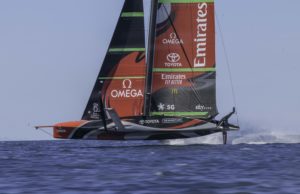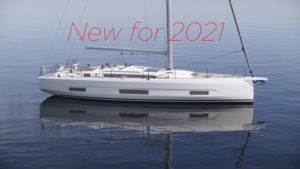Vendée Globe: update 23Nov20

The Vendée Globe fleet now stretches for more than 3,000 miles.
At two weeks since the race started there are many repairs, small and not so small, that skippers need to make. Alex Thomson is currently experiencing this first hand.
Race leader Thomas Ruyant (LinkedOut) had to climb the 28m mast of his IMOCA after his spare halyard broke, while Sébastien Simon has fixed his weather vane, and Armel Tripon on L’Occitane has had to make a composite repair on a part of the foil well. Kojiro Shiraishi has been engaged in a week-long repair to his mainsail.
Catch up with skippers from around the fleet, including Ruyant‘s mast climb.
Tough times for team Thomson
On Saturday evening (21Nov20), while carrying out a routine inspection onboard, Thomson spotted what he believed to be some structural damage in the bow area of the boat, Hugo Boss.
At the time, Thomson was located approximately 800 miles east of Rio de Janeiro in the South Atlantic ocean, and was 13 days into the Vendée Globe round-the-world yacht race.
After notifying the shore team, Thomson carried out a full inspection.
“That inspection has revealed some structural damage to a longitudinal beam at the front of the boat,” says Ross Daniel, technical director. “The damage appears to be isolated to that area alone. It is yet unclear what caused this damage. There have been no incidents of concern onboard the boat during the race so far.
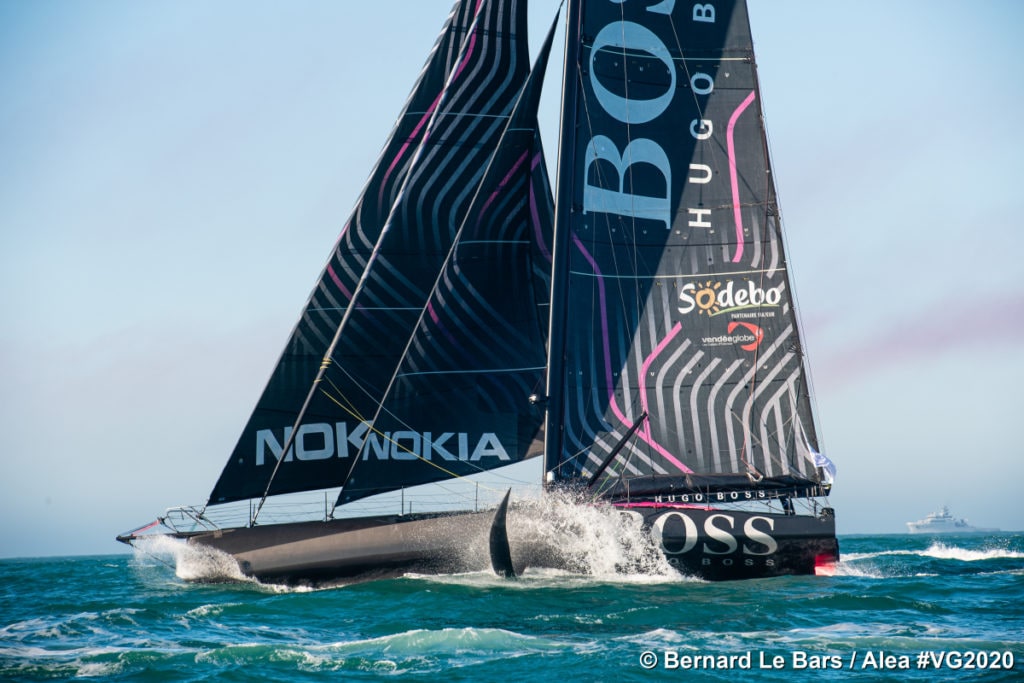
“Together with our structural engineers and naval architects, we worked through the night to put together a full repair plan for Alex. During this time, Alex took some rest onboard in order to prepare to begin that repair work this morning.
“Our objective is to carry out the necessary repair swiftly and effectively, in order to minimise the miles lost and resume racing again.”
Thomson put the boat into a safe position to manage the sea state in order to reduce movement onboard while he carried out the repair.
“These new boats are really tough to sail, they are really hard to engineer and are slamming into the waves with a lot of power, which is most likely happened to Alex,” says Yoann Richomme, winner of the last Route du Rhum in Class40 and double winner of La Solitaire du Figaro.
“What is hard is that we know that they took their feet off the gas a little in the south on the last race to preserve the boats last time, and I think they will be doing that again. From the scenario we are seeing they need to preserve the boats.
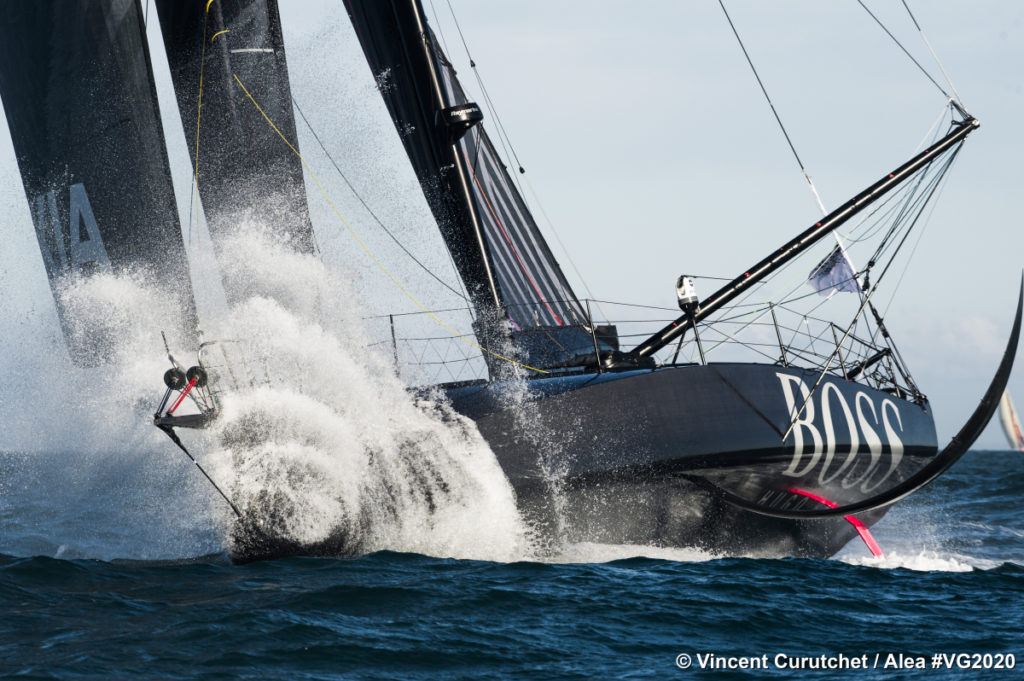
“When these boats start taking off, they were slamming the hulls a little bit further back but now these boats are fully foiling, flying a lot of the time, it is now the bows which are hitting the waves in front, from 2-3m high at times and the impact on the bows is huge and we know a lot of the boats in France had reinforcements in the bow.
“We saw Corum L’Epargne in September have a two week repair in their bow. They are discovering new problems and we are hoping they have covered off most of them.”
“I have just heard about Alex Thomson’s structural problem. This is a mechanical sport so there are bound to be problems, these boats are still new and we haven’t sailed with them for a long periods at high speeds. We will discover things as we go along. We are all taking care and not pushing our boats like we could be. There are a lot of situations where we don’t know how the boat will react in the long run and it’s true that with the foils, it brings new load constraints and we can’t control everything. It’s a new way of sailing,” says Armel Tripon, from onboard l’Occitane en Provence.
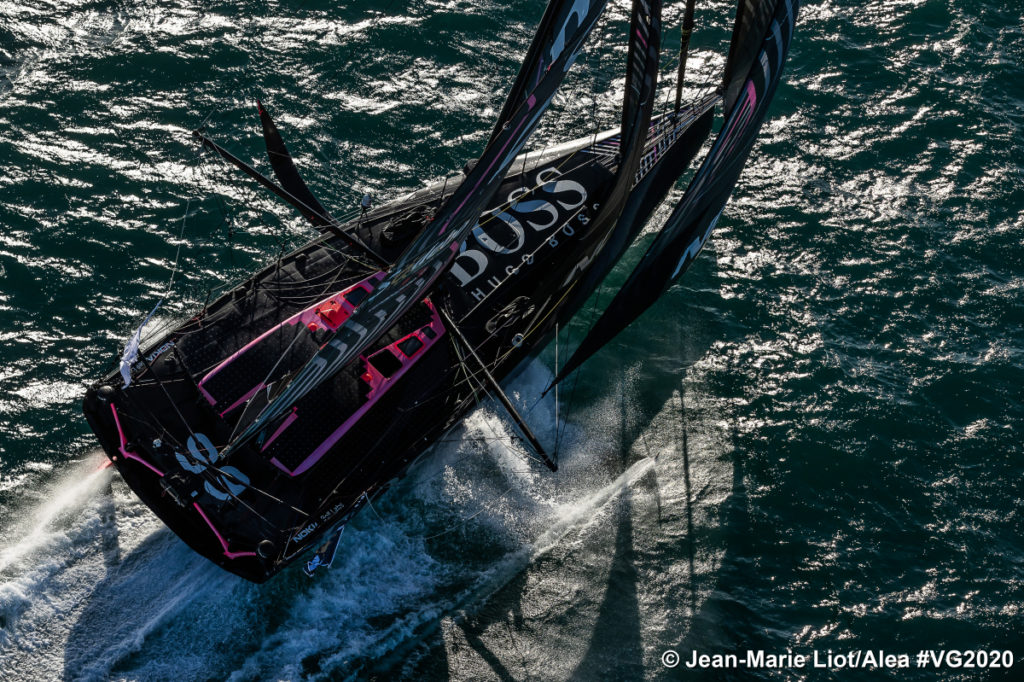
“The boat just needs to accelerate and the teams and architects are pushing to go fast. Now it is up to each sailor to sail with his or her peace of mind.”
Alex Thomson says he’ll do ‘whatever it takes’
Thomson spent yesterday undertaking repairs (22Nov20).
“It was a bit of a shock at first but obviously it could have been a lot worse. It’s repairable and we’re not yet in the southern ocean,” Thomson says.
“I called my technical team and they got the right group of people together – the designers, the engineers, the team. While they were digesting the information, that was my time to sleep. Knowing it was going to be a big job to get it all done, I got myself about six hours sleep so that I’d be ready.
“Then we started running through the repair plan so that I could fully understand it and ask the right questions. The first part of that was to stabilise the hull so that involved some cutting, gluing and bolting. That’s done now and it’s been laminated. The next part is to get the rest of the repair prepped. I need to get all the materials together and do as much of the cutting now while it’s still light. Then the rest of it doesn’t matter because it’s in the bow and it’s dark in there anyway. It’s really humid up in there. But we carry quite a lot of materials – under-water resin, glues that can deal with humid conditions – so the materials can deal with it quite well. I imagine a lot of teams don’t carry as much as we do.
“I’m in a rhythm now so I’ll keep going for as long as I can. It’s quite an intricate job so I can’t rush it and I need to make sure it’s right.
“I’m disappointed obviously but this is the Vendée Globe. This is what it entails. You’ve got to be able to deal with this stuff. This is why we carry these materials and tools, and why we’re generally very good at being able to deal with these things. Normally I feel angry and sad and emotional but I don’t this time. I just need to get on with it. I’m sure at some point the emotions may go the other way but, for now, there is only one thing to do and that is to get the job done as best as I possibly can. I will do whatever it takes to stay in the race.”

Sam Davies has been making repairs
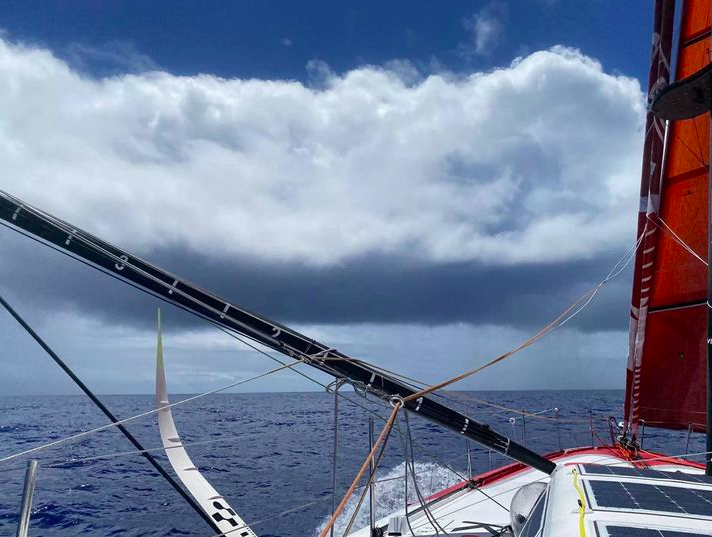
“Today [Sunday 22Nov20] the wind dropped steadily all day. Slowly things began to become possible on board: like sticking my head outside the cockpit roof without getting drenched, being able to move around, to go forward and check on the bow.
“Suddenly I realised it was time to check off some little jobs and checks whilst the going was calm. A bit of rope work to repair some chaffe, a climb around inside the boat from front to back to check the structure, check in the keel box and the foil cases.
“I even managed to clean up some more of the sardine oil (from a sardine tin explosion in the first days of the race!) This is the first real calm day since the start so I’m not complaining (yet!). I can feel all the muscles in my body slowly relax as there is no threat of being thrown across the boat today.
“I will make the most of this peaceful evening to recharge my batteries.”
(09.41 23Nov20)
Pip Hare is really tired

She’s through the worst of the Doldrums and heading to the equator.
She says she can sleep when the boat’s stable, but that it’s a ‘million miles from that at the moment’. (19.41 22Nov20)
Miranda Merron is eating dinner at 4am
Listen to her early morning check-in. (23Nov20)
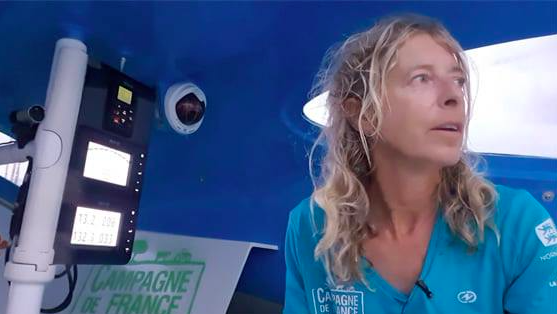
Watch yesterday’s round-up from Vendée Globe organisers
(17.30 22Nov20)
Note: to view these videos in Safari, please ensure Flash player is enabled.


